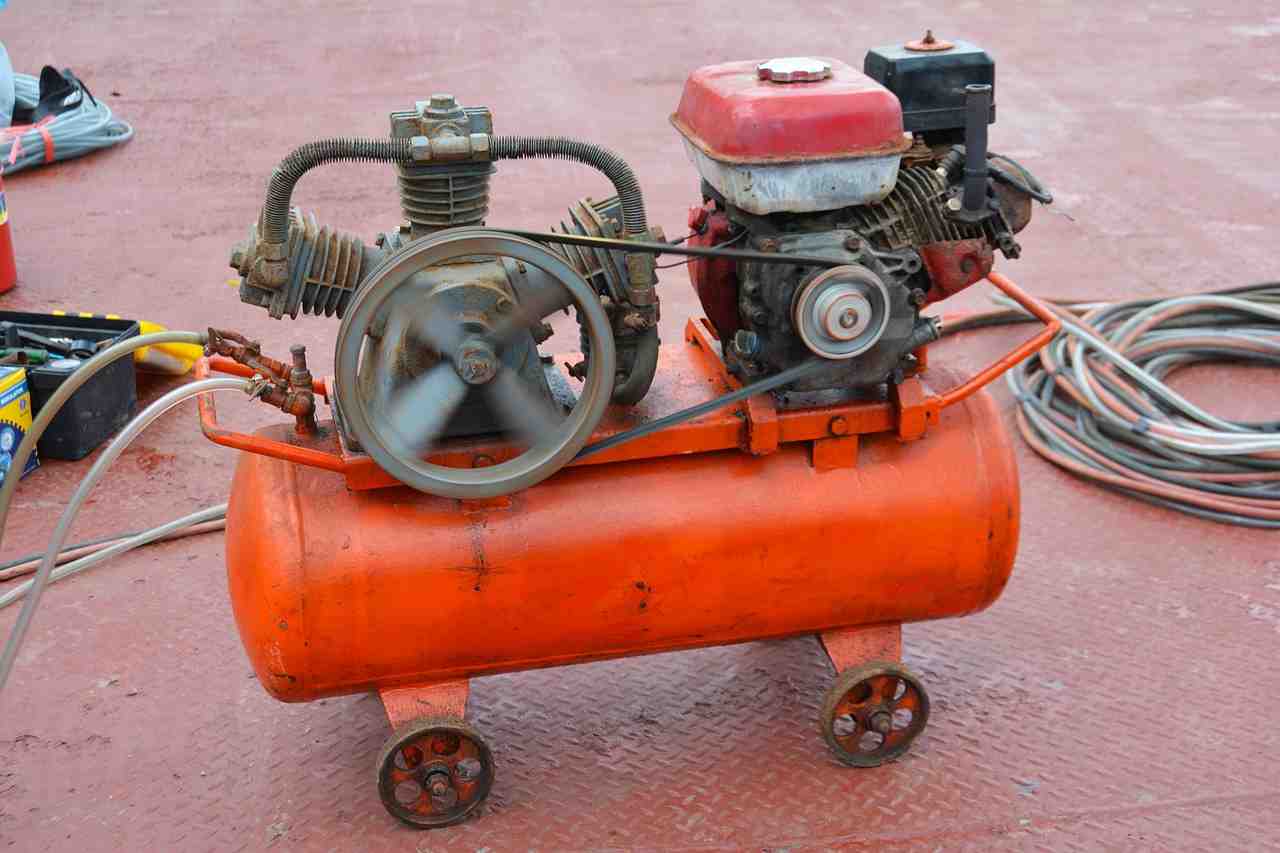Are you looking for the perfect air compressor to power your roofing nailer? You’ve come to the right place! I’m an experienced air compressor expert, and I’m here to help.
Finding the best size of air compressor can be difficult, but with my guidance, you’ll have no trouble picking the ideal one.
Choosing the wrong size of air compressor can cause problems like overworking it or not getting enough power.
This article will explain all you need to know about selecting a suitable size so that you can ensure your roofing job is completed efficiently.
You deserve an air compressor that meets all your needs while being easy on your budget – let me show you how! With some simple tips and advice, I’ll make sure you get a great machine that fits in perfectly with both your lifestyle and wallet! Keep reading to find out what size of air compressor is best for powering a roofing nailer.
Types Of Compressors
When it comes to air compressors, there are many options available. The most common types of air compressors include the pancake compressor, reciprocating compressor, rotary-screw compressor, scroll compressor, and diaphragm compressor.
Each type has its own distinct set of benefits and drawbacks that can help you decide which one will best meet your needs.
A pancake compressor is a great choice for those who need an inexpensive option with portability in mind. This type of compressor is lightweight and easy to store away when not in use.
It’s also typically quieter than other models due to its unique design. On the downside, these units don’t provide as much power or pressure as some of the other styles.
Reciprocating compressors offer more power and pressure but tend to be larger, heavier and noisier than their counterparts. Rotary-screw compressors have higher capacities compared to the other types while still being relatively quiet; however they require a lot more maintenance than others do.
Scroll compressors are another good option if you’re looking for something quiet yet powerful enough for heavy duty tasks such as roofing nailers.
Diaphragm compressors are often used in construction work because of their high capacity output but come with a steeper price tag compared to some of the other varieties.
No matter what kind of project you’re tackling, there is likely an air compressor out there that will fit your needs perfectly – now let’s look at power requirements for roofing nailers so we can make sure we choose the right one!
Power Requirements For Roofing Nailers
Power requirements for roofing nailers are essential to consider when selecting an air compressor. To select the optimal size, one must understand both the power needs of the specific model of roofing nailer and the capabilities of a given air compressor. Here are four key factors to consider when choosing an air compressor:
- PSI: The amount of pressure (measured in pounds per square inch) that your particular roofing nailer requires should be matched with the PSI rating of your chosen air compressor.
- CFM: Cubic feet per minute is another important factor to consider, as it measures how much volume of air can be delivered by an air compressor over time.
- HP Rating: Horsepower ratings will give you an indication of just how powerful your chosen air compressor is and what tasks it may or may not be able to handle.
- Tank Size: It’s also wise to take into account tank sizes when selecting an air compressor; larger tanks means more compressed air stored which helps provide longer run times without needing refill cycles.
By understanding these four elements, you’ll have a better idea about whether or not a certain type of air compressor is up for the task at hand – powering your roofing nailer efficiently and effectively. With this knowledge in mind, you can make an informed decision on which sized unit best fits your project’s needs.
Factors To Consider When Choosing An Air Compressor
When selecting an air compressor for a roofing nailer there are several factors to consider. Firstly, you must determine the size of the air-compressor that is appropriate.
Generally speaking, a larger compressor will be able to handle more robust and longer nailing applications with ease.
Secondly, look at the features offered by each model – particularly in terms of portability, power source, noise levels, tank volume and operating costs.
Thirdly, take into account your own personal requirements; do you require a continuous or intermittent flow of air pressure? Are you looking for increased mobility or maximum power output?
Finally, it’s important to weigh up the benefits of having a large tank capacity against potential running costs before making a purchase decision.
Tank capacity helps ensure sufficient airflow throughout the application process, while pressure output can help reduce operational time by providing consistent performance through rapid pressurization. These two elements should be considered together when choosing an air compressor for any job requiring compressed air.
Tank Capacity And Pressure Output
Choosing the right air compressor for a roofing nailer is essential. The tank capacity and pressure output of the air compressor must match the requirements of your tool to ensure optimal performance and safety.
Tank size determines how much storage space there is for compressed air, while operating pressure determines how efficiently it can power your tools. A larger tank will require less frequent refilling, but may be too bulky for some applications.
When selecting an air compressor for your roofing nailer you should consider what type of job you are doing and determine if its necessary to have a higher than normal PSI rating.
If so, then look for an air compressor that offers a high CFM (cubic feet per minute) rating as this indicates energy efficiency and increased power capabilities in comparison to lower rated models.
However, if you only need sufficient air pressure to power your roofing nailer, then you might want to go with a smaller model or one with adjustable settings which allows you to customize the amount of air pressure delivered by the device depending on the application at hand.
Safety Precautions
When using a roofing nailer and air compressor, it’s essential to take the proper safety precautions. First, anyone operating this kind of device needs to receive proper training in its use.
This will ensure that users understand how to set up their equipment correctly and safely operate it. It’s also important for them to wear protective gear such as goggles, dust masks and hearing protection when working with a nail gun and an air compressor.
In addition, all workers should be aware of their surroundings at all times while using such machinery so they can avoid any potential hazards or accidents. Always check the area around you before starting work and make sure everyone is clear from the area where you are going to be nailing down shingles or other materials.
Lastly, never attempt to repair any part of the machine yourself without consulting an experienced technician first – doing so could result in serious injury or even death.
Conclusion
When it comes to selecting an air compressor for roofing nailers, there are several factors to consider. The size of the tank capacity, pressure output and power requirements all need to be taken into account. It can feel like a daunting task but with careful consideration you’ll have the right tool for the job in no time.
I recommend always checking the manufacturer’s instructions when purchasing any kind of power tool or pneumatic device. That way you can ensure that your equipment is compatible with the air compressor that you select. This will help keep your project running smoothly and safely – like a well-oiled machine!
In conclusion, choosing the correct size air compressor for a roofing nailer is an important decision. Don’t let yourself get overwhelmed; carefully weigh up your options and you’ll soon find yourself ‘nailing’ this task in no time at all!







